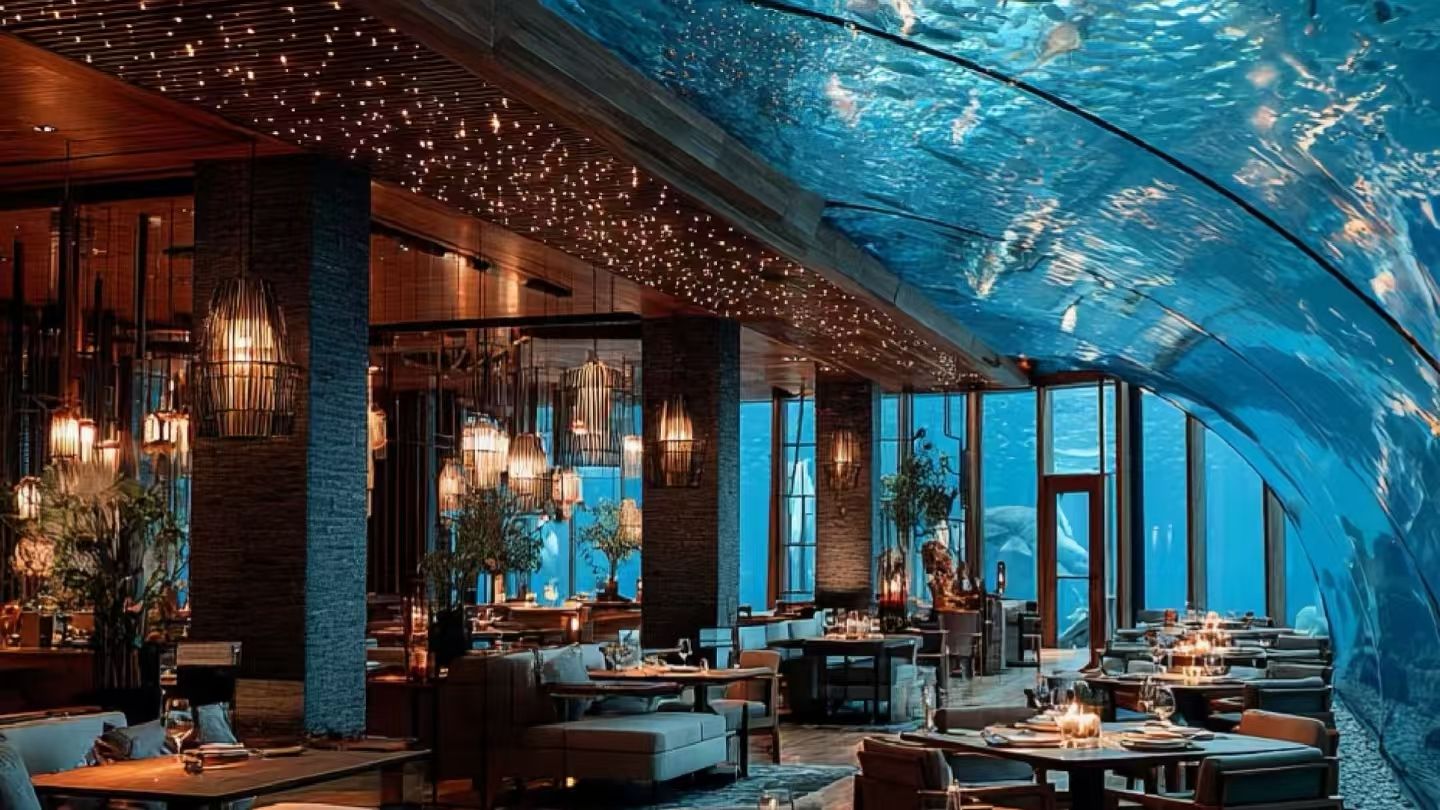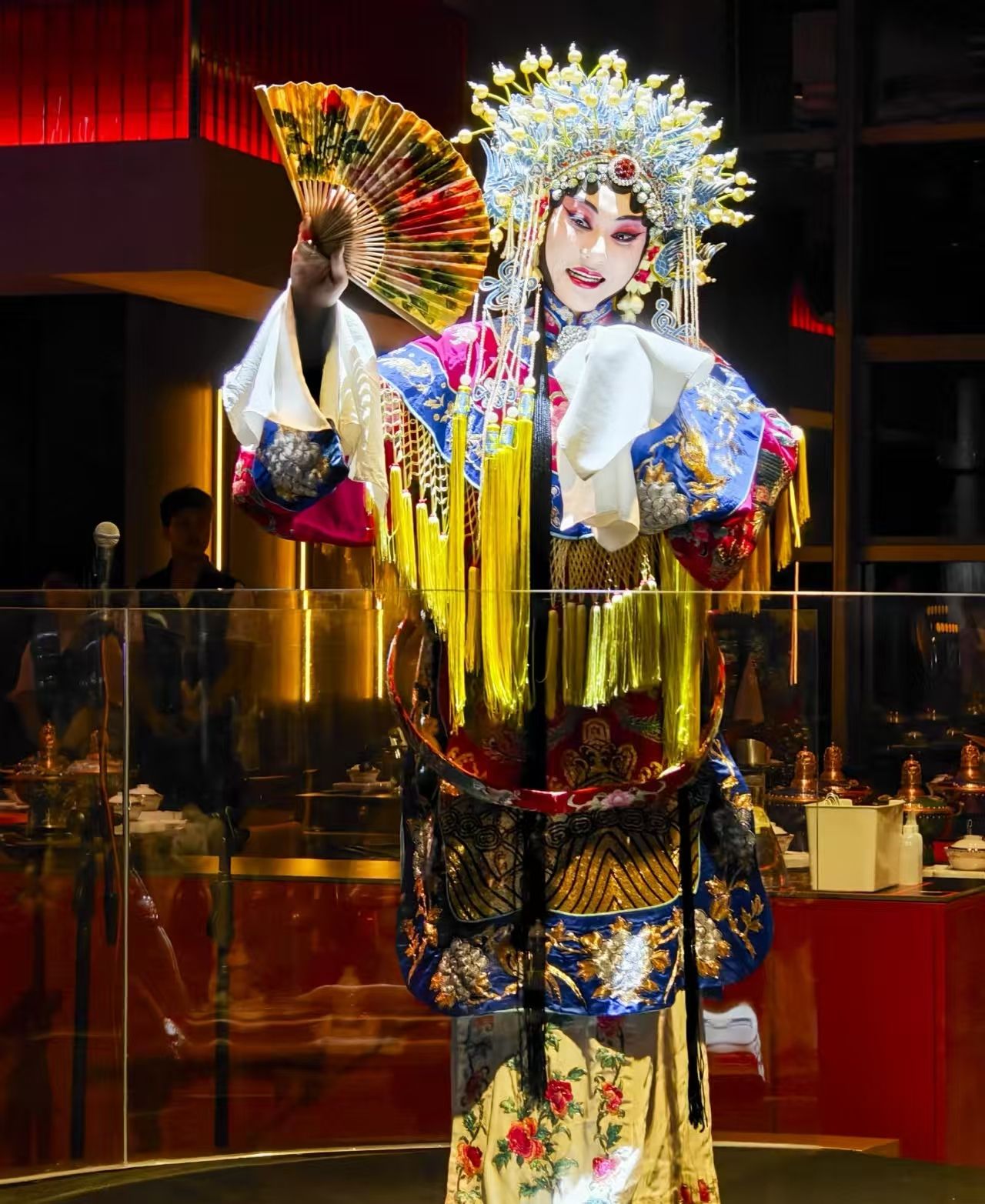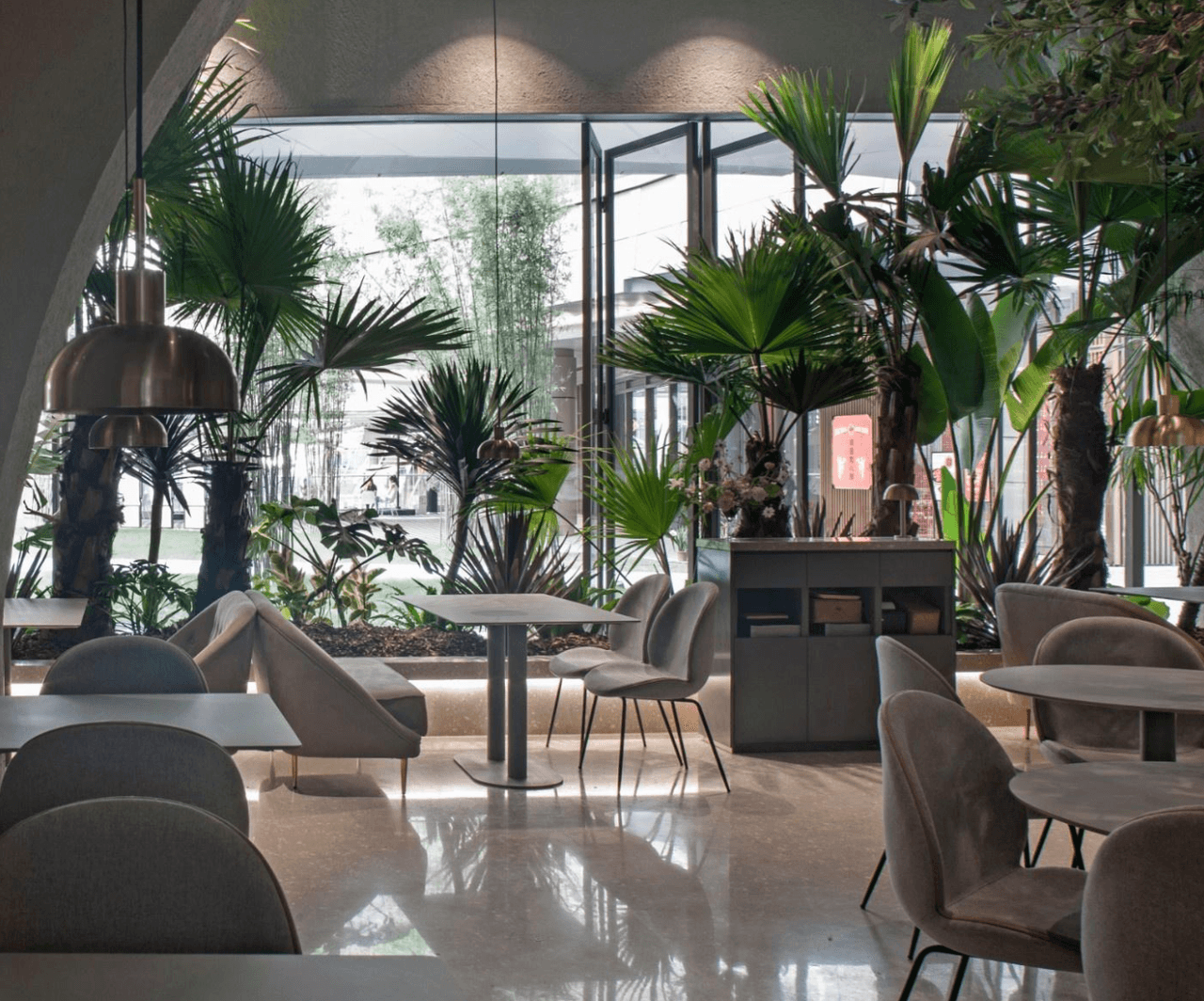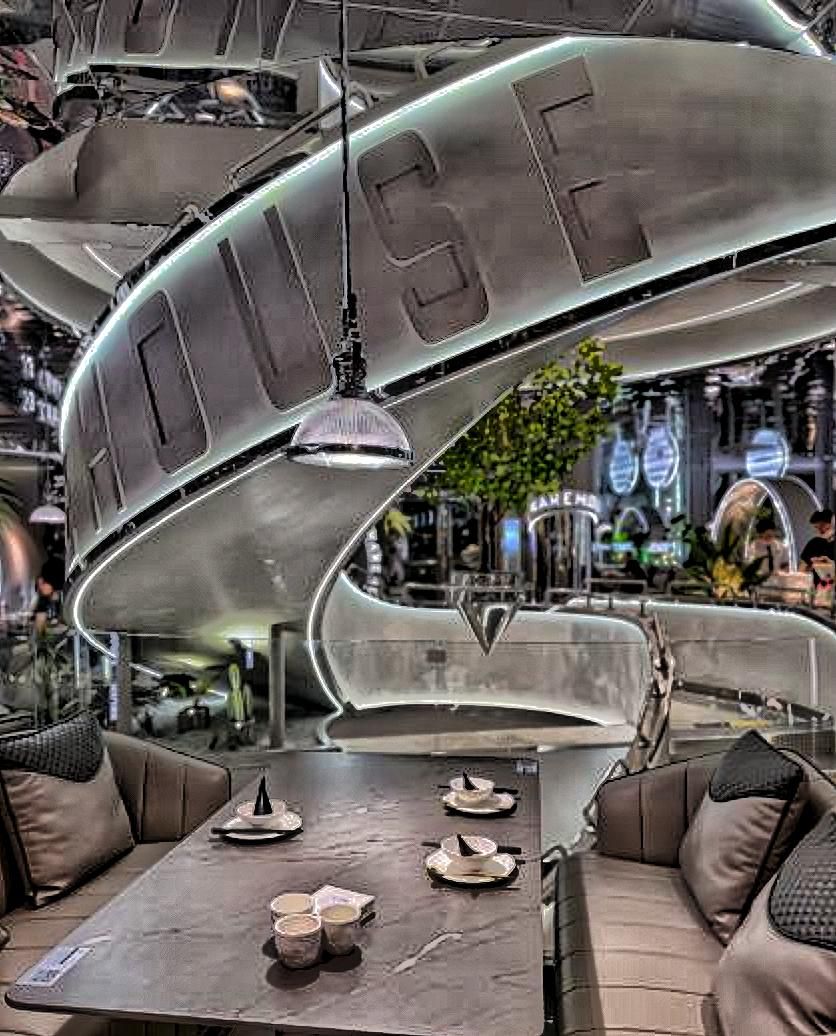
The Rise of “Atmosphere Restaurants” in China—and Why Gen Z Is Dining for Vibes, Not Just Flavor
Want to read in a language you're more familiar with?
In China’s cities, Gen Z is flocking to “atmosphere restaurants”—where immersive vibes, cultural heritage, and emotional healing now rival flavor as the main course.
When you think of a Chinese restaurant, what comes to mind? Red lanterns swaying overhead, the clamor of lively chatter, steaming dishes arriving in waves, and the rhythmic clatter of woks in the kitchen? Whether it’s a home-style eatery in New York’s Chinatown or a wildly popular Yang’s Malatang in Paris, Chinese cuisine is often synonymous with bustle, warmth, and everyday vitality.
Yet back in China’s urban centers, a new dining phenomenon is quietly taking root. Young people are no longer content with just “eating well” or “eating enough.” They’re lining up—not for food alone, but for an intangible dining experience. What they crave is atmosphere.
Take Shu Yan Fu in Chengdu: diners don traditional Hanfu (traditional Han Chinese attire, worn in pre-modern dynasties) for free, get elaborate historical makeup, sit on the floor, and watch live music and dance performances while feasting. It’s a three-hour immersive journey blending culture and cuisine. Reservations are typically booked a week in advance—and during holidays, it’s nearly impossible to snag a seat.
According to the 2025 Atmosphere Dining Trend Report by CBNData and the China Cuisine Association, 81% of Chinese diners consider a restaurant’s atmosphere “extremely important” to their experience—placing it on par with taste and service as one of the top three factors in choosing where to eat. In the past six months, content related to “atmosphere restaurants” on Douyin (TikTok) has surpassed 14 billion views, underscoring the massive momentum behind this trend.
So, what exactly is an “atmosphere restaurant”? And where does this obsession with vibe come from?
What Is an ‘Atmosphere Restaurant’?Pick Your Vibe
An “atmosphere restaurant” is not just about decor—it’s a mood-driven, full-body experience. Lighting, sound, scent, space, even staff behavior are carefully designed to transport diners into another world.
Of course, the food must be good. But atmosphere is the make-or-break factor for mass appeal. As one diner shared in a CBNData survey:
For me, eating isn’t just eating—it’s relaxation and exploration. I’ll go out of my way to ‘check in’ at a restaurant for its unique decor, soothing music, or healing vibe.
This demand has given rise to distinct styles of atmosphere restaurants, each speaking to different emotional needs and aesthetic preferences. According to the 2025 Atmosphere Dining Trend Repor, the four most popular styles among young people are:
1. Oriental Aesthetics Style: Cultural Immersion Rooted in Chinese heritage, these venues weave Song dynasty elegance, Peking opera, or intangible cultural heritage into the dining experience.
- Example: Beijing’s Xin Jing Xi stages full Peking opera scenes mid-meal—curtains part, gongs sound, performers take the stage—letting diners experience national art up close.

2. Nature Healing Style: Urban Green Oasis
These are “city sanctuaries” that flood the space with natural elements—courtyard greenery, flowing water features, raw wood tables, handwoven bamboo lamps—creating the illusion of escaping into forests or fields. Diners “eat slowly, breathe deeply,” and unwind from urban stress.
3. Relaxed Social Style: Easy, Authentic Connection Blending restaurant and bar vibes, these spots foster effortless socializing. Think neon lights, vintage record players, chill tunes, and just the right amount of tipsy cocktails.
- Example: Shanghai’s Miao Tang Zhu Spicy Grilled Fish targets young crowds with an all-in-one night out: grilled fish + craft cocktails + seamless hangout vibes. Friends can “eat and party without switching venues.”

4. Futuristic Avant-Garde Style: Sci-Fi Sensory Adventure Bold, tech-forward, and often themed around cyberpunk, space capsules, or industrial machinery. Old warehouses are transformed with holographic projections and mechanical installations.
- Example: Shanghai’s Warehouse No. 3 · Creative Chinese Cuisine spans over 1,000 sqm with crystalline white interiors like a “palace of ice.” It fuses regional Chinese flavors into innovative dishes, earning the nickname “White Crystal Palace” from netizens.

Though diverse in style, all four share a core evolution: restaurants are no longer just places to eat—they’ve become emotional spaces for self-expression, stress relief, and rebuilding human connection.
Why Are Young People Craving Vibes, Not Just Food?
The rise of atmosphere isn’t just a passing aesthetic trend—it’s a genuine response from young people navigating high-pressure society, identity shifts, and restructured social bonds.
1. Emotional Necessity: A Pressure Valve for High-Stress Lives “996 culture (a work schedule common in Chinese tech industries—9 a.m. to 9 p.m., 6 days a week),” workplace burnout, and fast-paced living define modern Chinese youth. Surveys show over 50% of urban young adults experience moderate-to-severe stress. Atmosphere restaurants have become their temporary sanctuary.
The Nature Healing style excels at emotional relief. A Chengdu forest-themed restaurant found 85% of diners felt “instantly relaxed” upon seeing lush greenery and hearing flowing water. Regular patron Ms. Li from Shanghai’s Streamside Cottage says:
After 10 hours staring at screens, I come here for mushroom soup and willow trees by the window. It feels like a week’s exhaustion just melts away.
This isn’t coincidence. The biophilia hypothesis in psychology suggests humans are innately drawn to nature. Nature-style restaurants transplant that connection into the city, offering an emotional recharge in the span of one meal.
This identity extends to local pride. Top restaurants don’t just mimic imperial banquets—they weave regional heritage: Hangzhou’s Yue opera, Nanjing’s Qinhuai lanterns (handmade lanterns from Nanjing’s Qinhuai River, used in traditional festivals since the Ming dynasty), Quanzhou’s Xianpu floral hair adornments. This “localized storytelling” strengthens the sense of “Who am I? Where do I come from?”
One young woman who tried the floral hairpin ritual (a traditional ceremony where fresh flowers are pinned in the hair—symbolizing femininity and seasonal beauty) said:
When I pinned fresh flowers in my hair, I suddenly felt a tangible link to traditional life on this land. That fulfillment goes far beyond a full stomach.
3. Social Reconnection: Craving Real Bonds in a Digital Age Young people have hundreds of online “friends” but few they can talk to face-to-face. Busy schedules make “grabbing dinner” a logistical nightmare. Social connection has become an unmet need.
Atmosphere restaurants step in as the “third space”—a bridge between home and work. Many feature long communal tables, cocktail bars, and interactive zones. Some even host regular script-murder games, concerts, or youth salons to build offline communities.
Take Chengdu’s Luhu Forest District: people come to eat, stroll, attend night classes, or join talks—like a “mini vacation of light socializing.” It draws over 5 million visitors annually. In an era of virtual connection, young people are reclaiming real human contact. A cozy, vibe-rich restaurant becomes the starting point for genuine conversations—and friendships.
Is This Just a Trend—Or Something Deeply Chinese?
On the surface, atmosphere restaurants seem like a modern fad. But look deeper, and you’ll see they’re a contemporary expression of ancient Chinese lifestyle aesthetics and spatial philosophy.
In China, eating has never been just about filling the stomach—it’s a vehicle for social bonding, ritual, and relationship-building. From pre-Qin hospitality to today’s business banquets and friend catch-ups, “let’s eat” is how Chinese people connect.
Atmosphere restaurants elevate this with emotional design: immersive themed feasts, customizable family-style private rooms—all amplifying the joy of shared time. They honor the tradition of “building bonds over food” while meeting modern desires for quality companionship.
Chinese aesthetics emphasize “scene-emotion fusion”—poetry contains painting, painting contains poetry; gardens shift with every step; architecture feels “man-made yet heavenly.” Environment isn’t backdrop—it’s a trigger for mood.
This lives on in today’s restaurants:
- A Hangzhou Zen vegetarian spot borrows Suzhou garden techniques—mini bridges, rippling water, dappled light—to calm the mind before the first bite.
- Rainforest-style venues use vines, greenery, and natural light to create an “urban secret realm.” The ultimate goal? Nourishing the heart. As the ancients said, “Where you dwell shapes your spirit; what you cultivate shapes your body.” Some restaurants put this into practice:
- Zen spaces with water sounds and minimalist stone encourage diners to put down phones and reflect.
- Nature-filled rooms ease urban anxiety with plant scents and greenery. From “gathering friends over food” to “crafting poetic scenes” to “healing through environment”—these millennia-old cultural codes are being revitalized through modern design and innovation in young people’s daily lives.
China Joins the Global Table: An Eastern Answer to the Experience Economy
China’s atmosphere restaurant boom isn’t isolated—it’s a chapter in the global experience economy.
Eventbrite reports 78% of millennials prefer spending on experiences over goods. This has birthed parallel trends worldwide:
- Hokkaido’s “forest restaurants” serve meals amid seasonal woodlands.
- Nordic Hygge cafés wrap guests in candlelight and blankets for cozy socializing.
- U.S. immersive dining offers pitch-black meals or sky-high banquets. The message is clear: prioritizing experience and atmosphere is a global consumer shift.
At its core lies shared human needs—beauty, belonging, ritual. Whether it’s a Chinese themed banquet, Japanese tea ceremony, or French Michelin tasting, we seek the same things. Western kitchen parties and Chinese street-side eateries differ in form but serve the same function: human connection. Holiday feasts worldwide use ritualized dining to reinforce identity.
Soft lights, rising music, a bite of food—dopamine surges, guards drop. Joy is universal. As the Chinese saying goes: “Hearts are the same under heaven.” China’s atmosphere restaurants contribute a uniquely Eastern answer to this global conversation—blending heritage, emotion, and innovation.
One Table, Connecting Past, Present, and the World
When a meal becomes a multi-sensory journey… When a restaurant becomes a space for emotion, culture, and connection… We may be at the cusp of a dining revolution.
China’s atmosphere restaurants are a microcosm of our time. They reflect young people’s craving for a moment of ease amid pressure, and their re-embrace of cultural identity in a globalized world. Most importantly, they gently bring 5,000 years of aesthetic wisdom into modern life.
For the world, the rise of vibe is more than a trend—it’s a collective answer to “What is a good life?” From Tokyo to Paris, Chengdu to San Francisco, we speak the same language through different ingredients and settings: mood, belonging, companionship, healing.
So if you want to understand today’s China, start at a table. Sit down. Listen to the guqin. Watch the light shift. Taste the soup. What you’ll experience isn’t just designed beauty—it’s the warmth and wisdom of a civilization pulsing into the present. One dish, one lamp, one scene—carrying emotional resonance across cultures and into the heart.
Welcome to China. Take a seat at an atmosphere table. You’re not just tasting food—you’re feeling a civilization’s heartbeat in the new era.





